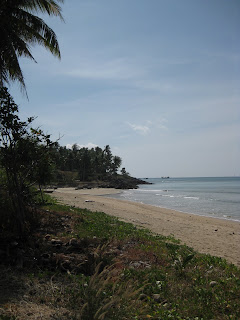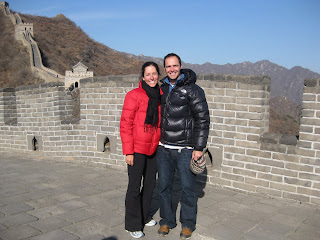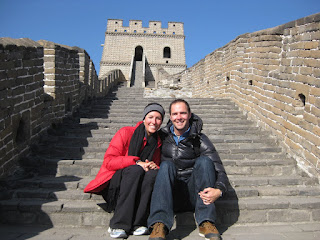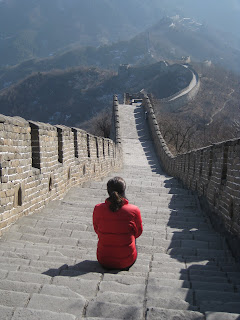HK/China Fun Facts:
- $1 US = 7.75 Hong Kong Dollars
- $1 US = 6.83 Chinese Yuan
- China’s population is 1.3 billion
- China is home to 20 of the world’s 30 most polluted cities (25% of California’s pollution comes from China)
- Percentage of China’s population under the poverty line (>$1 US per day) in 1979 = 64%. Percentage in 2004 = 10%
- China recently overook the US as the world’s largest broadband market. (Don’t ask about Facebook or Twitter, though!)
HK/China Superlatives:
Best Hong Kong/China experience:
Krista - The Symphony of Lights night laser show in Hong Kong and walking the streets of Yangshao for a traditional feel.
Scott - The Great Wall of China. Exceeded expectations. Wandering around Yangshuo is a close second.
Best iconic attraction:
Krista - absolutely the Great Wall. It was one of the most impressive structures I have ever seen. The steep hike at Mutianyu is well worth it
Scott - The Great Wall, definitely.
Favorite Chinese dish
Krista - Kung Pao Chicken. It tastes even better here - I swear! I ate it twice.
Scott - Anything on a stick. The Chinese eat everything on a stick.
Most random photo taken with complete strangers:
Biggest surprises about China:
Krista - 1) The public restrooms are porcelain holes in the ground called “squat” toliets and they do not provide toilet paper so I had to always keep tissues in my pockets. 2) Many people do not speak English, including cab drivers and waitresses which makes getting around and eating a challenge. 3) Maybe it was because of the frigid weather, but I did not notice the pollution in Beijing.
Scott - Surprised by how widely English is spoken, even in Guanxi
Hardest language ever: Mandarin Chinese
Most helpful suggestion we can offer for YOUR trip to China:
Krista - Keep tissues in your pockets at all times and make sure to have the address for where you are trying to go in Chinese to show a cab driver!
Scott - 1) Bring an appetite. The food is good and very inexpensive. 2) Sharpen your bargaining skills to save some money along the way 3) Don’t go to Beijing in the winter
View China in a larger map


















































 Our next destination was Yangshuo, a beautiful smaller town of 310,000 surrounded by stunning topography and skyrocketing limestone mountains. We really enjoyed this place and stayed for a few days. Beyond its natural beauty, which you’ll notice in the photos, the village area was teeming with shops, great noodle restaurants and cafes. Although we were asked if we wanted a ride on a bamboo raft thousands of times by the local “entrepreneurs“, we found the area very charming. We liked the prices, too, paying just $9 US for a night in our hotel, $8 for a delicious authentic meal with drinks, and $.87 for a large beer. We definitely stuck out like sore thumbs here. In fact, Krista kept saying that she felt like we were in a Social Studies video.
Our next destination was Yangshuo, a beautiful smaller town of 310,000 surrounded by stunning topography and skyrocketing limestone mountains. We really enjoyed this place and stayed for a few days. Beyond its natural beauty, which you’ll notice in the photos, the village area was teeming with shops, great noodle restaurants and cafes. Although we were asked if we wanted a ride on a bamboo raft thousands of times by the local “entrepreneurs“, we found the area very charming. We liked the prices, too, paying just $9 US for a night in our hotel, $8 for a delicious authentic meal with drinks, and $.87 for a large beer. We definitely stuck out like sore thumbs here. In fact, Krista kept saying that she felt like we were in a Social Studies video. 






